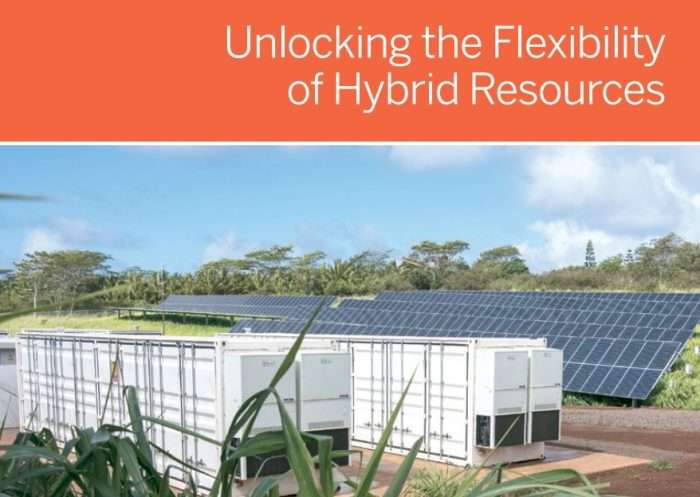Integrating Hybrid Resources Into Power System Markets and Operations

Hybrid Resources Have the Potential to Unlock New Forms of Flexibility for Renewable Resources and Allow Them to Provide a Wide Range of Grid Services
Reston, Va. – The Energy Systems Integration Group (ESIG) has released a new report, Unlocking the Flexibility of Hybrid Resources, which discusses the rapid increase in hybrid resources across technology types, the ways these resources interconnect to the grid, and what they mean for system operations and markets. In the near future, it is likely that many, and potentially most, new renewable projects could be built with some level of hybridization—in which multiple resources (including generation, storage, and/or load) share a common point of interconnection to the grid. The report offers initial recommendations for system planners, market designers, and policymakers as they define market rules and requirements that govern hybrids’ use, with the goal of encouraging flexibility and creativity in the design and implementation of new technologies and capturing the range of benefits they offer.
“Market design and regulatory requirements should allow for hybridization across many new types of resources and technologies, as this will allow engineers, developers, and asset owners to creatively design systems that meet the physical and financial needs of the system in a reliable and cost-effective manner,” said Mark Ahlstrom, ESIG Board of Directors President. “We can’t perfectly predict all that the future holds, but with hybrid resources that can be more easily modified and upgraded with changing needs and technologies, we can stay competitive, relevant, and valuable in the energy systems of tomorrow.”
Hybrid systems offer a number of advantages, providing grid services that solar or wind alone often cannot economically provide and helping to reduce the need for costly transmission upgrades.
“As our power grids transition away from fossil fuels, we need to replace not only energy but the full suite of reliability services that were historically provided by fossil fuel plants,” said Derek Stenclik, chair of ESIG’s Hybrid Resources Task Force and founding partner of Telos Energy. “Hybrid resources open the door for renewable resources to be more active participants in grid reliability and our evolving power markets.” Unlocking the Flexibility of Hybrid Resources offers seven guiding principles designed to help system planners, market designers, and policymakers take advantage of the synergistic effects and diversity benefits of combining complementary resources, and help to open the door for future flexibility and services in a transforming grid.
The Energy Systems Integration Group is a nonprofit organization that marshals the expertise of the electricity industry’s technical community to support grid transformation and energy systems integration and operation, particularly with respect to clean energy.
Click here for the full report as well as additional information on the task force and its ongoing work in this area.
For more information on ESIG, visit www.esig.energy.


